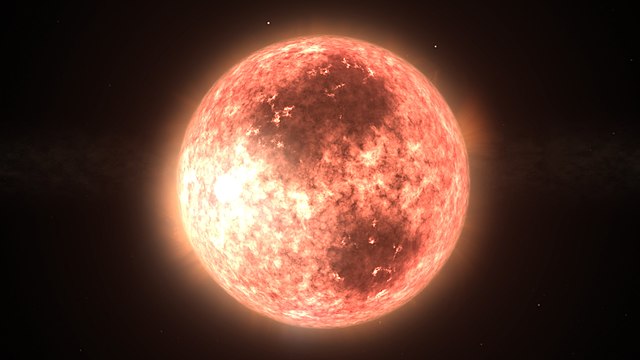Gliese 229 is a binary system composed of a red dwarf and the first brown dwarf seen by astronomers, 18.8 light years away in the constellation Lepus. The primary component has 58% of the mass of the Sun, 69% of the Sun's radius, and a very low projected rotation velocity of 1 km/s at the stellar equator.
Gliese 229 A and B
A red dwarf is the smallest kind of star on the main sequence. Red dwarfs are by far the most common type of fusing star in the Milky Way, at least in the neighborhood of the Sun. However, due to their low luminosity, individual red dwarfs cannot be easily observed. From Earth, not one star that fits the stricter definitions of a red dwarf is visible to the naked eye. Proxima Centauri, the star nearest to the Sun, is a red dwarf, as are fifty of the sixty nearest stars. According to some estimates, red dwarfs make up three-quarters of the fusing stars in the Milky Way.
Proxima Centauri, the closest star to the Sun, at a distance of 4.2 ly (1.3 pc), is a red dwarf.
Gliese 623 is a pair of red dwarfs, with GJ 623a on the left and the fainter GJ 623b to the right of center.
Illustration depicting AU Mic, an M-type (spectral class M1Ve) red dwarf star less than 0.7% the age of the Sun. The dark areas represent huge sunspot-like regions.
An artist's impression of a planet with two exomoons orbiting in the habitable zone of a red dwarf.





